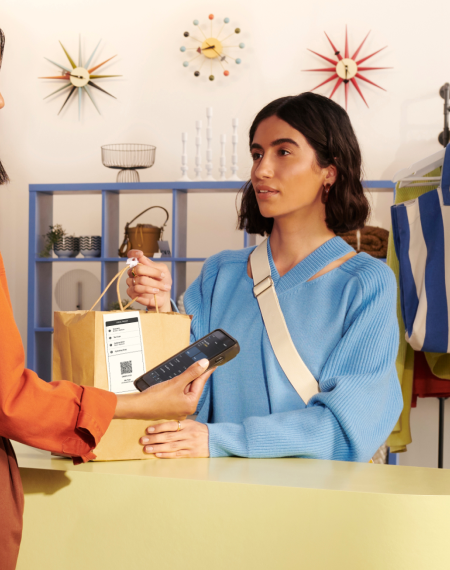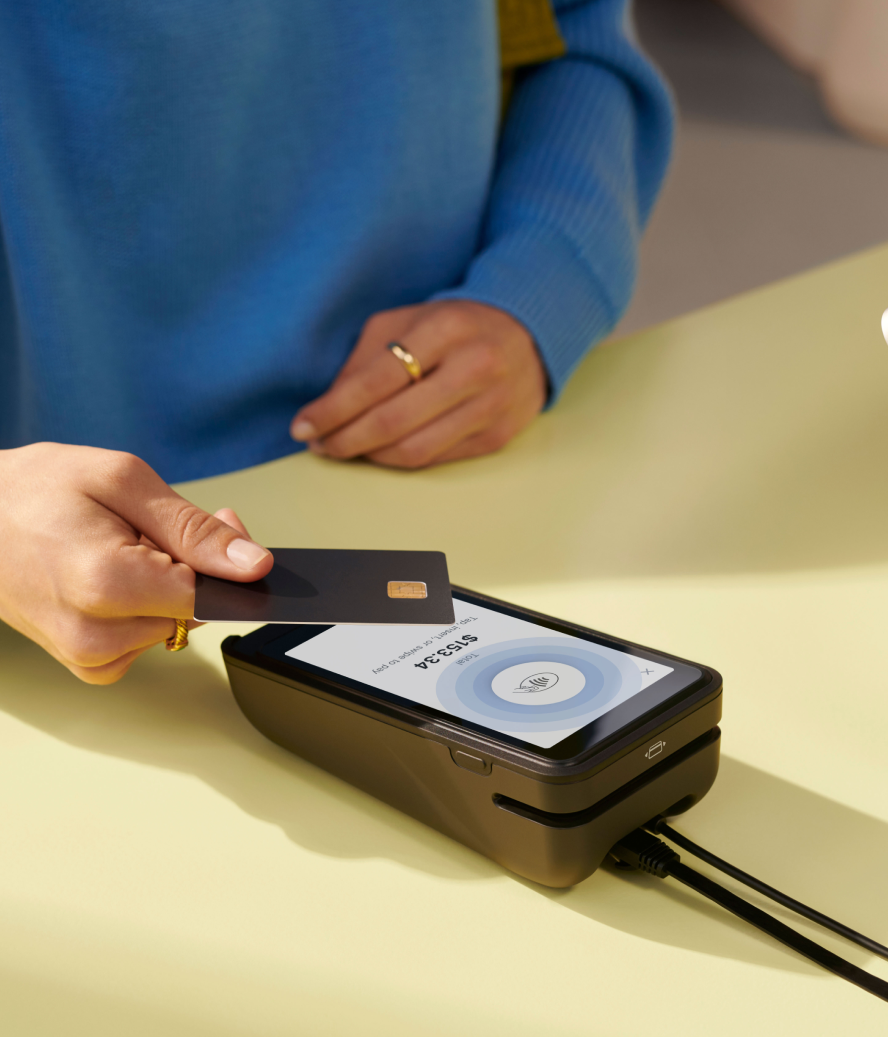Visitors are the lifeblood of every retail store, so understanding your foot traffic and what’s driving people to visit your store can help you tailor your buying experience to your customers’ needs. Analyzing retail foot traffic data is how you get to know your customers, optimize your store layout, deliver winning customer experiences and, ultimately, earn more sales. Here’s more on what retail foot traffic means and how to use that foot traffic data to your advantage.
What is retail foot traffic?
Retail foot traffic, or footfall data, refers to the number of people or customers who enter a brick-and-mortar store or other physical retail location within a specific period of time, typically on a daily, weekly, or monthly basis. By leveraging foot traffic datasets—data points related to visitor movement through a retail space—store owners can better understand their peak hours, what parts of the store customers most frequent, and the relationship between visits and sales.
The goal of collecting foot traffic data is to count the number of visitors to specific points of interest (POI), or high priority locations, in a retail store, within a defined period of time. POIs include the store entrance and exit, product displays and end caps, department store counters, pop-up sales locations, and any other spot or shopping area that you want to monitor.
Tracking foot traffic data offers businesses a range of valuable customer and business insights, including:
- The number of people who visit over a defined time period
- The busiest days and times for business
- The average duration of each visitor’s stay
- How many people walk past the store rather than enter it
- The most frequently visited parts of the store
- The effectiveness of marketing and sales campaigns
By monitoring this retail foot traffic data, you can gain a competitive edge, enhance operational efficiency, and attract more consumers.
5 ways to collect retail foot traffic data
Foot traffic data collection can be achieved through a combination of manual or automated methods, including:
1. Mobile devices
The availability of foot traffic data has exploded with smartphone usage. As of 2022, the Pew Research Center found that 85% of Americans own smartphones. As these users enter stores and interact with physical spaces, they may leave behind data points—such as specific locations visited within the store and how long they spent there. This is possible, for example, if the person has downloaded a store’s app and accepted location sharing through GPS or beacons. Information can be collected and analyzed to assess shopping behavior and preferences.
Mobility data tracking software uses the in-app location settings in mobile devices to track consumer movements through a retail space with great accuracy, but without collecting personally identifiable information like names, contact information, or demographic data. Aggregating this mobile location data from various devices provides insight into foot traffic trends to help retailers better understand their consumers’ shopping habits.
One potential drawback of relying solely on foot traffic data from mobile phones: users may choose to opt out of tracking. In this case, data may only be representative of a fraction of store visitors, potentially skewing your insights. To circumvent this issue, retailers might consider supplementing mobile phone data with people counters or video analytics tools to get a more accurate count.
2. Wi-Fi traffic
You can use your internal Wi-Fi networks to collect foot traffic data when guests connect via their devices. First-time and repeat network connections and movements between Wi-Fi zones can be collected to help form a picture of how many guests are new versus returning customers.
Aislelabs, for example, leverages a store’s Wi-Fi system to enable store-wide heat maps, Wi-Fi counting, and automated marketing. Wi-Fi counting provides compiled, aggregate, and real-time visitor counts. And automated marketing sends guests location-specific advertisements and review requests while they’re in-store. Heat maps use colors and shading overlaid onto a map of the retail space to help retailers identify high-traffic areas of their store and visualize visitor flow.
As with mobile phone data, tracking Wi-Fi traffic requires that visitors willingly log in to your Wi-Fi network. It’s likely that only a fraction of visitors will, which again can skew data insights. Backing up this collection method with manual, or software, tally or clicker counting, video analytics integrated into camera surveillance, or traffic tracking software can help you collect more accurate data.
3. People counting sensors
People counting sensors help to quantify the number of visitors who enter a store or visit a specific area using brake beams, infrared or thermal sensors that send beams of light between two sensors to record motion. The use of the sensors enables you to measure foot traffic at key POIs like entries, exits, or priority sales locations. When visitors pass through a POI, they cross the sensor threshold and break the beams, recording a visit to this specific location.
Shopify’s Dor People Counter, for example, is a battery-operated device that can be placed at POIs throughout your store. It uses thermal sensing to capture and track foot traffic, feeding the data into an app that syncs with sales data in your point-of-sale (POS) system.
Foot traffic data collected from people counting sensors can be used to track the total amounts of daily visitors, peak traffic hours, and traffic to priority areas. It cannot, however, track the flow of visitors moving through the store. Instead, retailers must extrapolate meaning from aggregate visitor numbers to POIs, without additional context into what other parts of the store visitors frequent.
4. Video analytics platforms
Video analytics platforms help retail stores monitor, analyze, and manage large volumes of data collected through closed-circuit television (CCTV) cameras. These technologies can identify patterns in visitor flow, high-volume locations in the store, and even suspicious activities.
To accomplish this, retailers can install specialty cameras that integrate with a video analytics platform. Together, these tools collect and analyze footage of visitor behaviors, noting common routes throughout the store, where customers spend the most time, and possible inefficiencies in the retail space’s layout.
Video surveillance is a great way to analyze visitor flow in real time, but it can be a complex and expensive undertaking. Large retail spaces require numerous cameras and the infrastructure to store and analyze the footage. This may be suitable for large retailers, but is potentially too onerous for smaller ones.
5. Manual counting
Manually counting people who enter and exit the store is a tried and tested way of monitoring retail foot traffic without spending money on expensive digital tools. Manual clickers or other counting techniques are an affordable way to collect more targeted data samples for foot traffic during important sales periods.
Of course, manual counting requires one or more dedicated staff members positioned at POIs throughout the day, making it a less trustworthy and more error-prone data collection method. Since this method has a greater chance of inaccuracy, it’s a good idea to use some kind of foot traffic tracking software to help you collect, store, analyze, and benchmark your data. Kepler Analytics’ Property Toolkit and Sensormatic’s ShopperTrak are two popular choices.
Tips for using retail foot traffic data
Combined with other data points like daily sales, total revenue, and conversion rates (number of sales divided by total number of store visitors and multiplied by 100), retail foot traffic can help you effectively plan better customer experiences, introduce experiential retail, and inform sales and marketing campaigns to drive more visitors and business.
The most common use cases for retail foot traffic data include:
- Optimizing store layouts. Analyze where customers go in the store and where they avoid. Identify inefficiencies in your store layout, and experiment with different arrangements and product placements to improve traffic flow.
- Building effective marketing, sales, and merchandising strategies. Track spikes in store traffic and interest in specific products after advertising and marketing campaign launches. Study the impact of sales promotions and merchandising campaigns on customer behavior to tailor future marketing efforts and in-store experiences.
- Ensuring adequate staffing. Note high- and low-traffic days and times to ensure you’re scheduling the right amount of staff. Avoid understaffing during peak periods and overstaffing during slow periods.
- Planning inventory. Project sales of certain products and brands based on foot traffic to key points of interest in the store. Use this data to predict the right amount of stock to order and when.
- Identifying growth opportunities. Perfect the customer experience at your flagship store, and expand your business to a second location using the insights you gain from studying foot traffic data.
Privacy considerations
Retail foot traffic data falls under the category of consumer information. That means you must be cautious about how you collect this data and how you use it to inform your retail strategies. You need to ensure that you adhere to all local and federal privacy laws when collecting and storing retail foot traffic data.
This is particularly important for retailers that collect data about foot traffic and individual shoppers through channels like buyer accounts or loyalty program cards. Together, foot traffic data and personal consumer and demographic data can be used to create a detailed profile of your shoppers. A variety of privacy laws like the European Union’s General Data Protection Regulation (GDPR) and the California Consumer Privacy Act (CCPA) regulate how this type of information can be collected, stored, and used.
As a retailer, be transparent about your data collection, offer opt-in or opt-out options for the sharing of data that personally identifies shoppers, and ensure you’re adhering to data security best practices. If in doubt, review your local and federal regulations and consult an expert in consumer privacy law to ensure that you’re in compliance.
Retail foot traffic data FAQ
Accurate points of interest (POI) data is needed for foot traffic data analysis because it helps to determine where shoppers go in a store most frequently. POIs are essentially location pins on a store map. Tracking foot traffic to those pins helps you discover trends and foot traffic patterns, telling you which parts of the store get the highest traffic and which products are shown the most interest.
What are the privacy and ethical considerations when using foot traffic data?
The privacy and ethical considerations of using foot traffic data relate to the lawful collection of consumer information, its proper usage, and ensuring that it’s securely stored—all while following local and federal laws. Even collecting aggregate data can raise security risks, so engage a consumer privacy law expert or have your legal counsel review all data privacy policies to ensure compliance.
Are there any industry benchmarks or standards for foot traffic data?
Yes, industry benchmarks and standards are available through most retail foot traffic tracking software applications and foot traffic data providers. Many retailers use these benchmarks to help build better products, guide retail site selection, optimize in-store experiences, and compare foot traffic data with their closest competitors.





